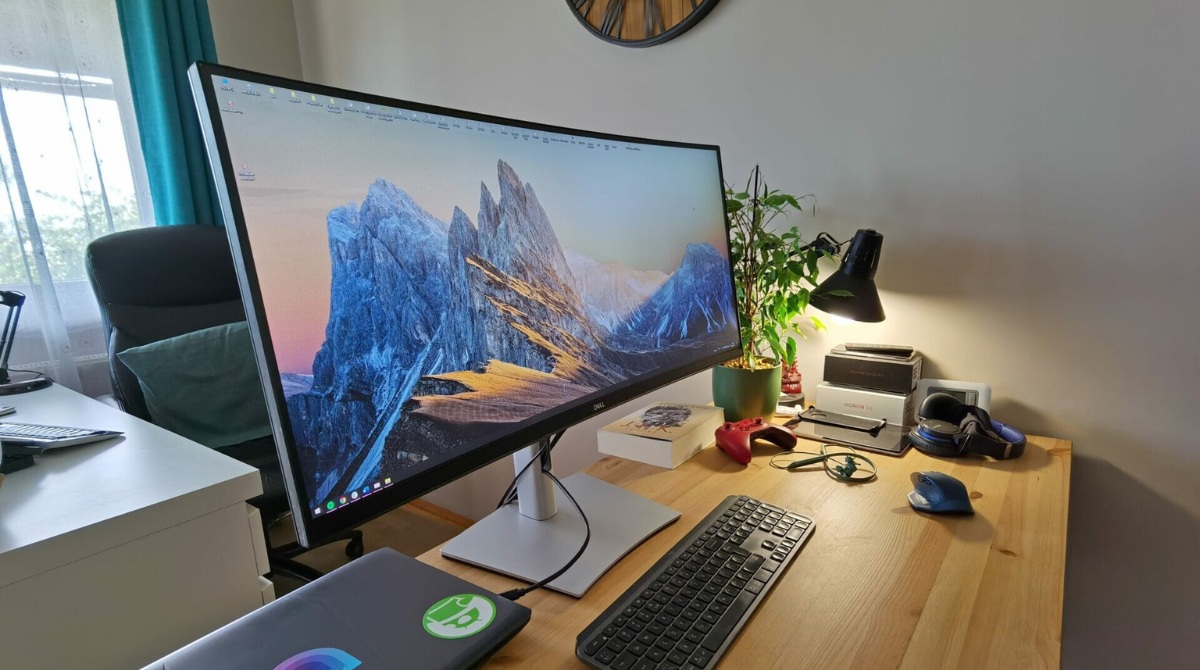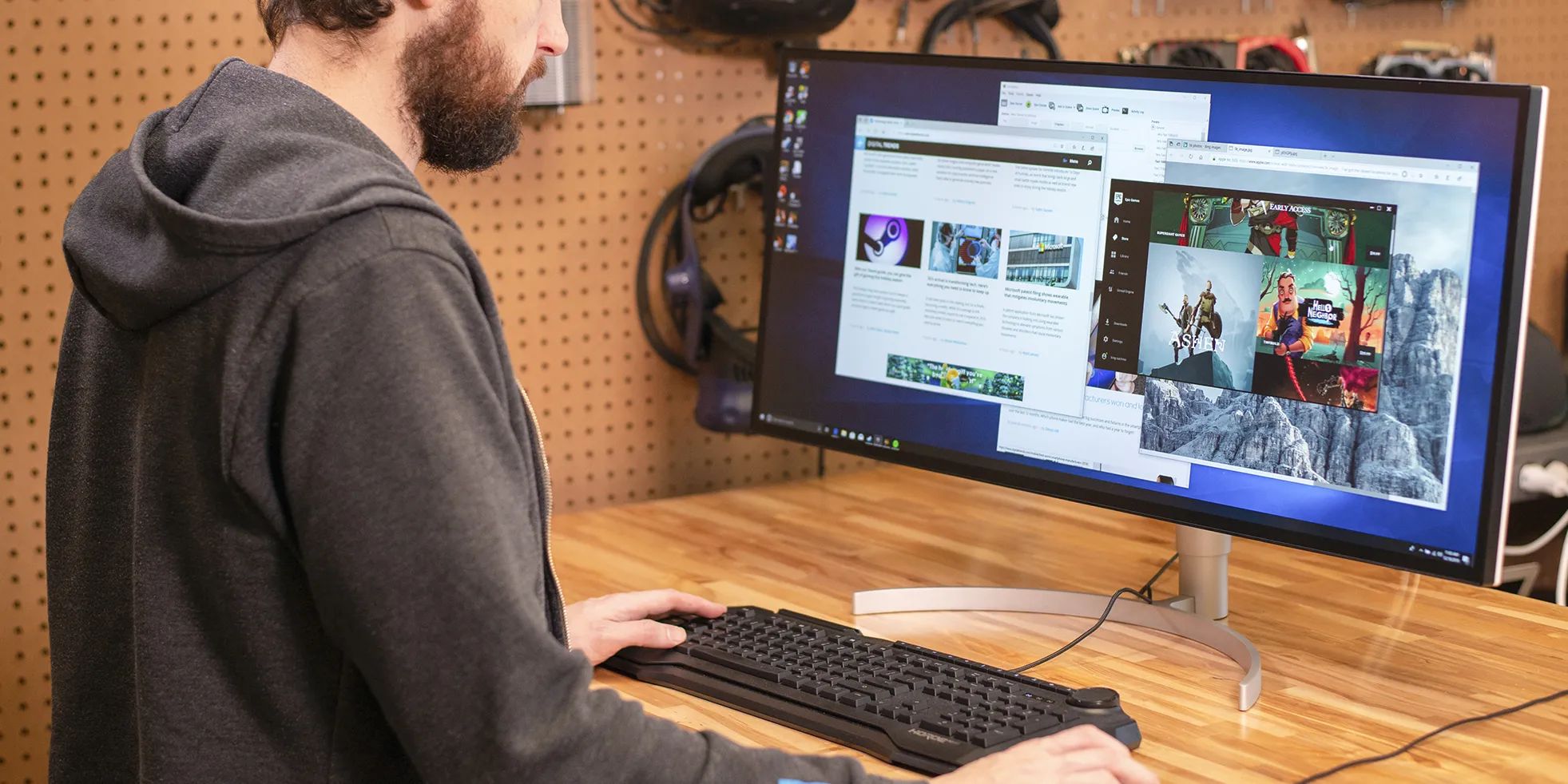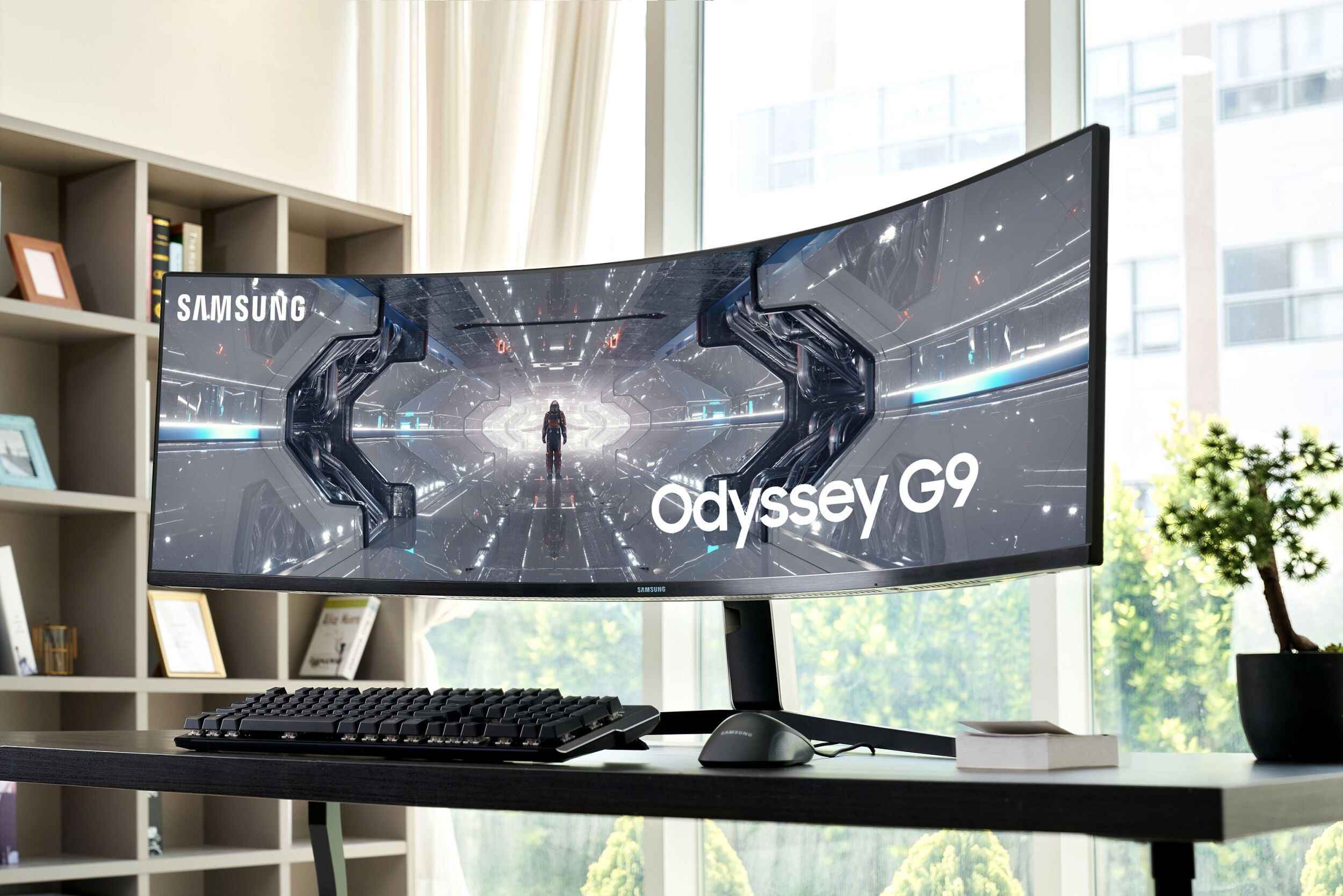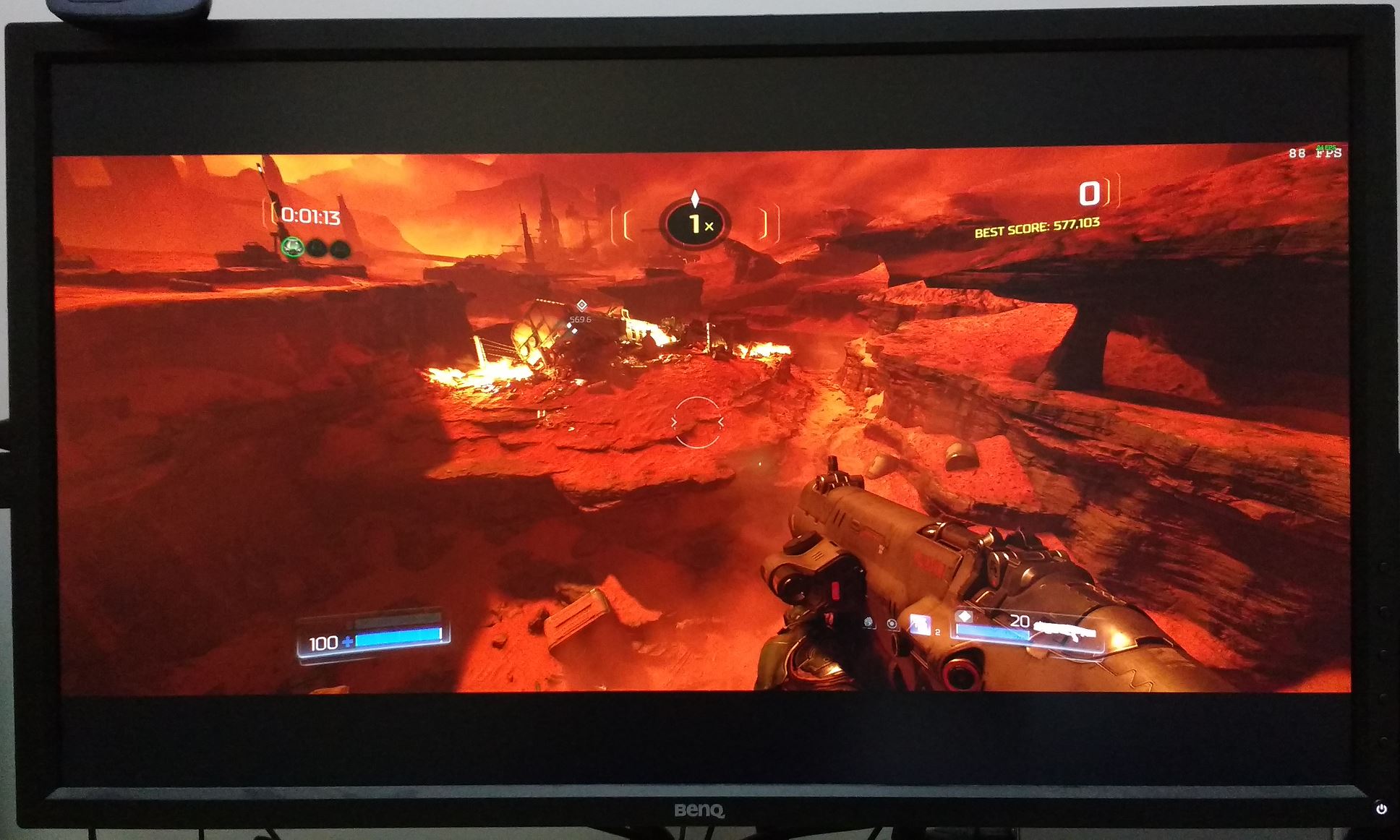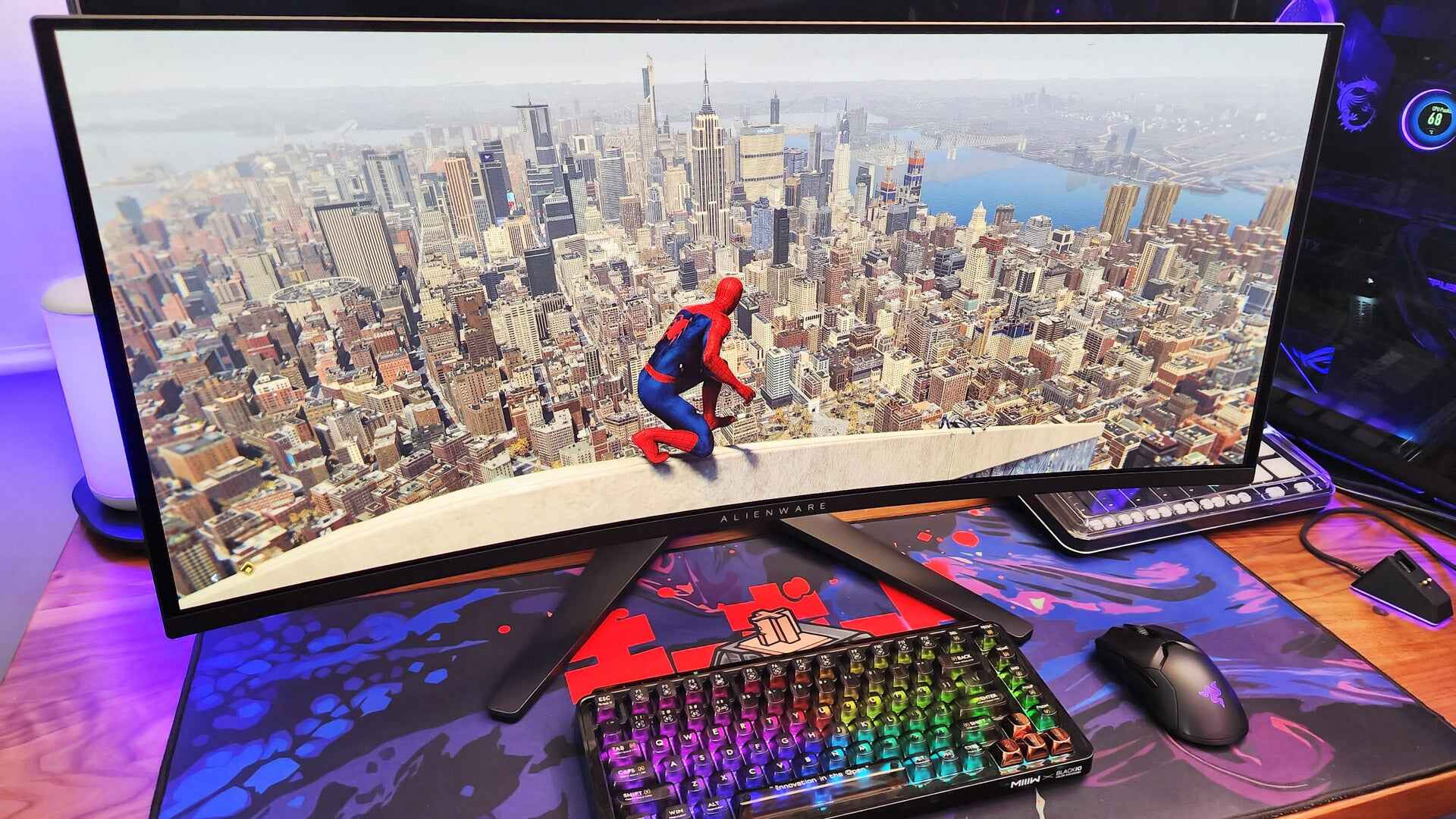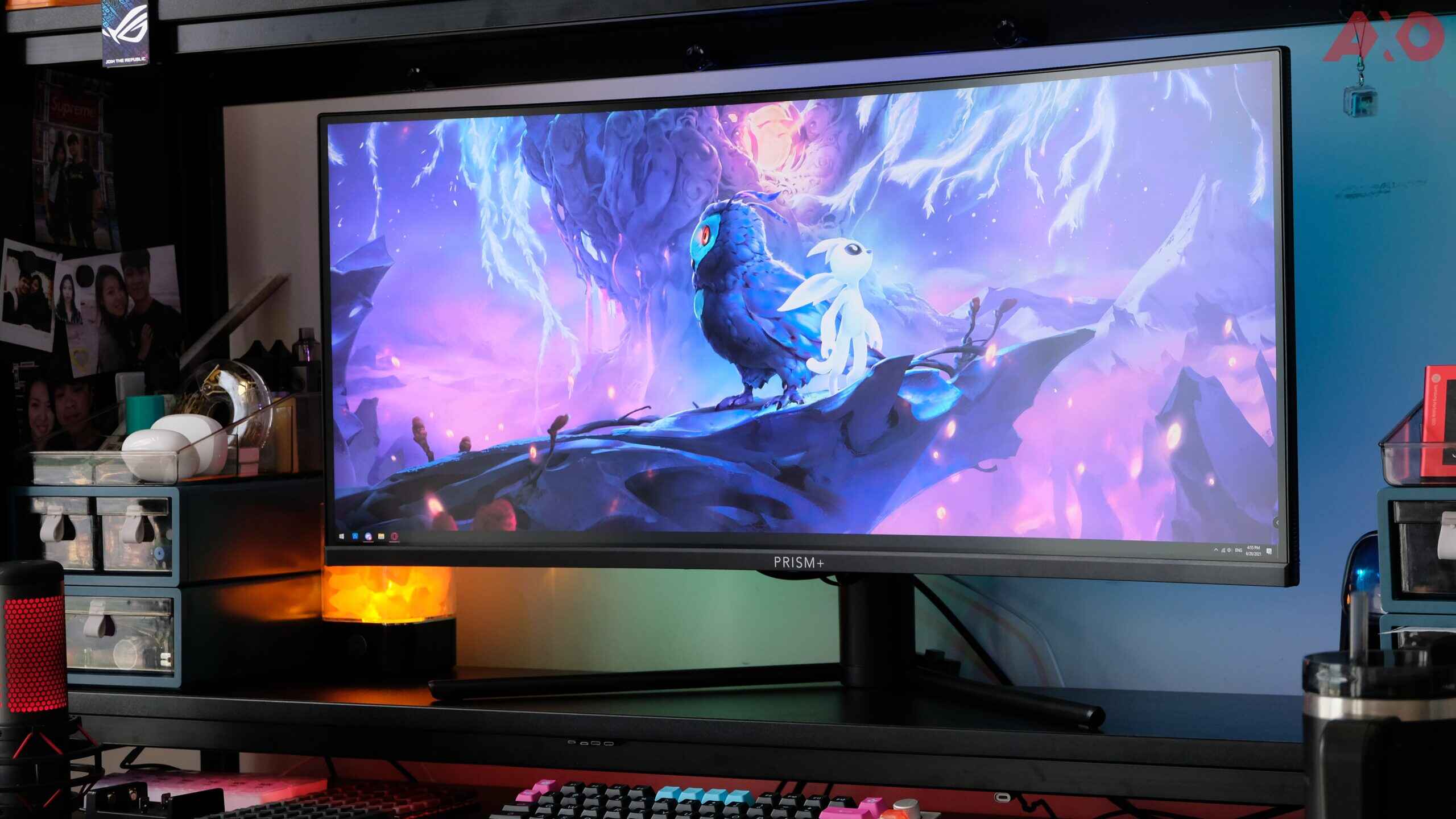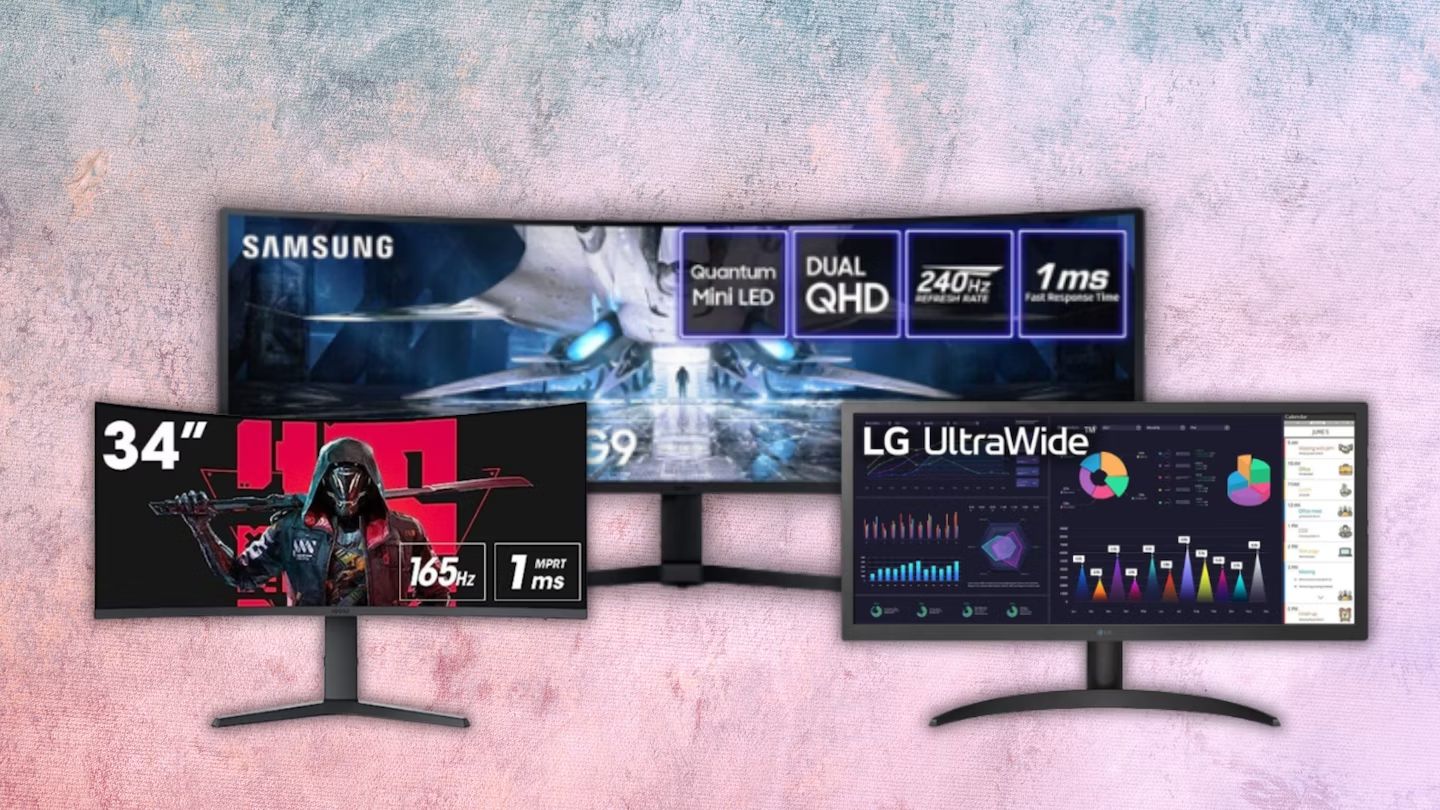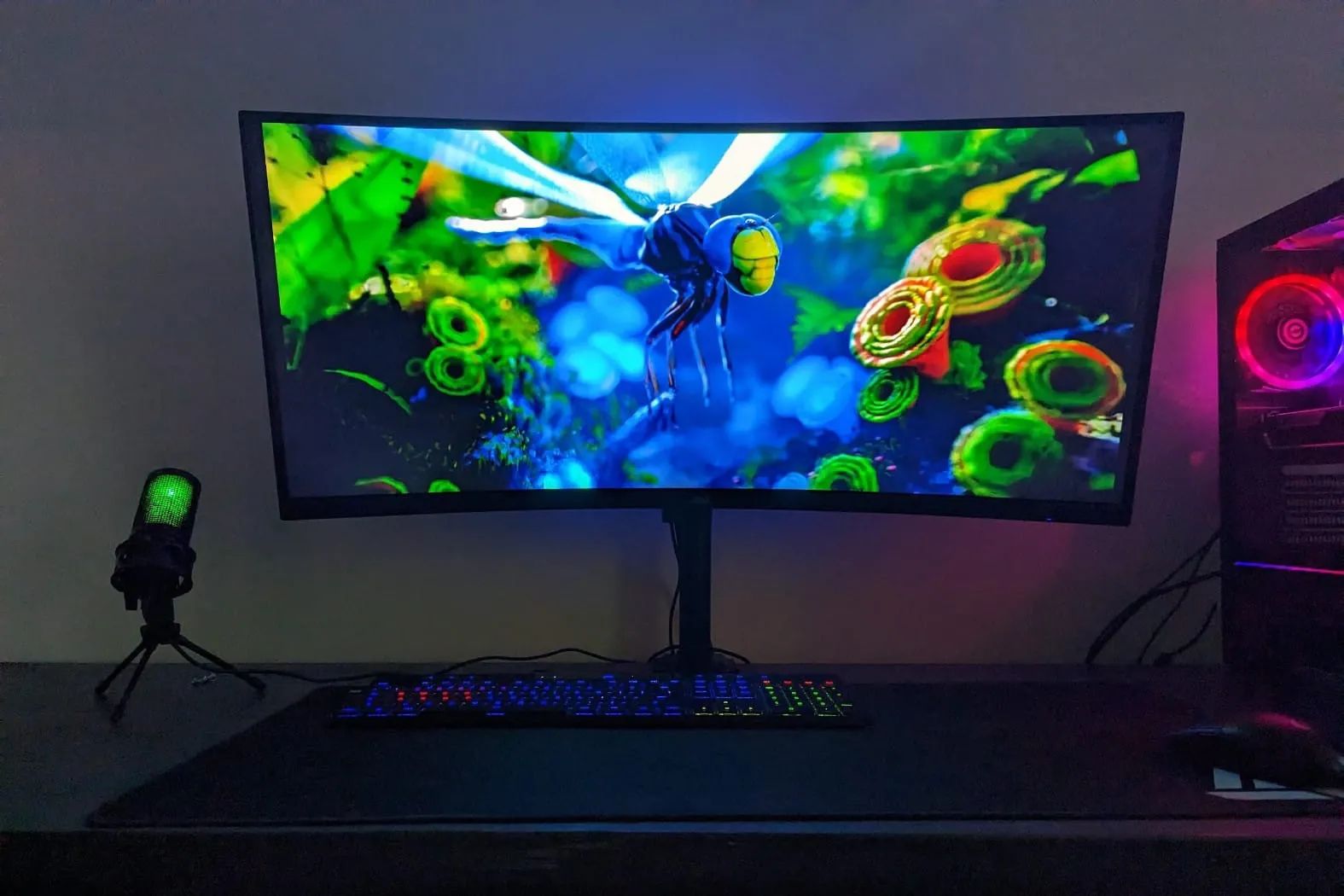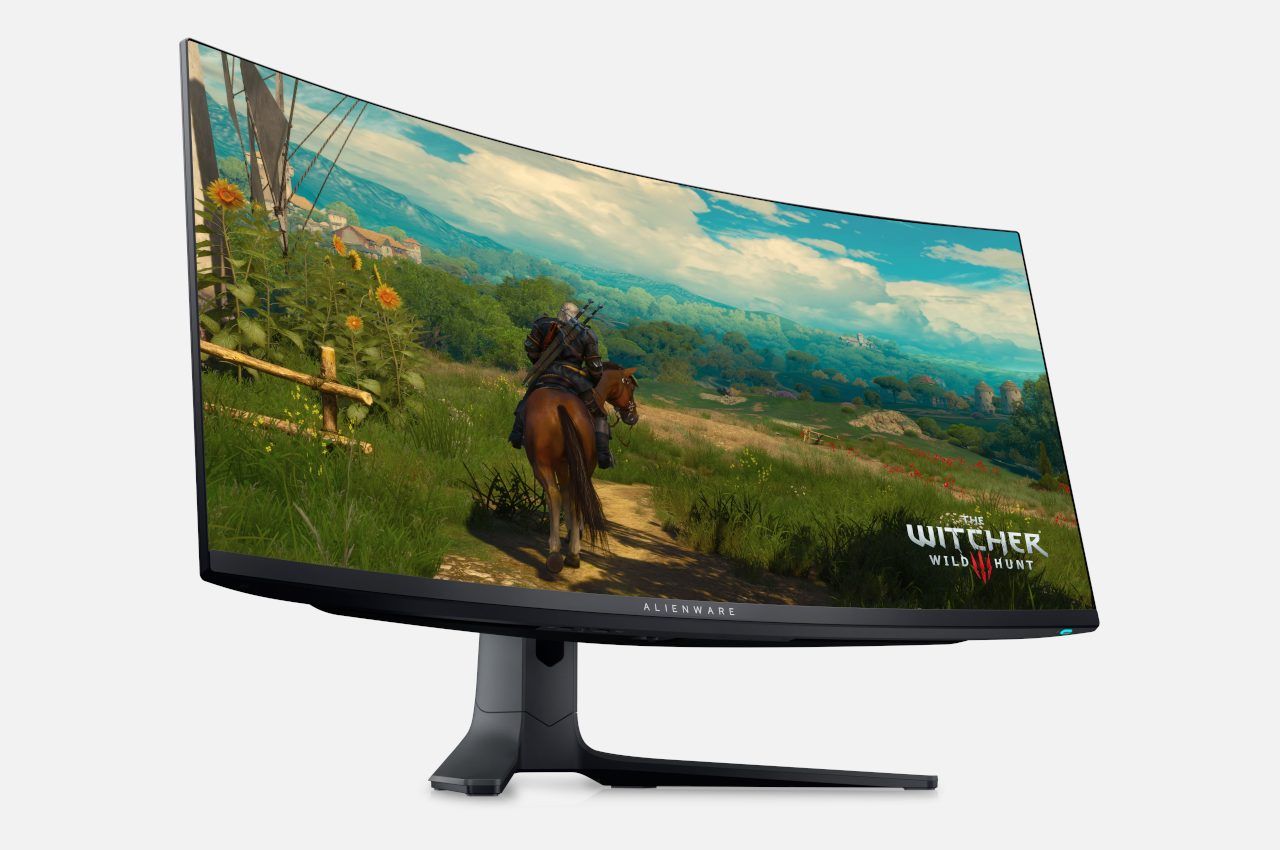What is an Ultrawide Monitor?
An ultrawide monitor is a type of display that offers a wider aspect ratio than traditional monitors. While regular monitors typically have a 16:9 aspect ratio, ultrawide monitors provide an aspect ratio of 21:9 or even 32:9, creating a much wider viewing space.
These monitors are designed to provide an immersive visual experience by extending your field of view. They offer a wider horizontal display, allowing you to see more content without the need for multiple screens or excessive scrolling. Whether you’re a gamer, designer, programmer, or simply a multitasker, an ultrawide monitor can greatly enhance your productivity and enjoyment.
Unlike dual monitor setups, which have a visible barrier between them, an ultrawide monitor provides a seamless and uninterrupted viewing area. This makes it perfect for tasks that require a wider screen, such as video editing, graphic design, and data analysis.
Ultrawide monitors come in various sizes, typically ranging from 29 inches to 49 inches (diagonally measured). The larger size options offer an even more immersive experience by filling your peripheral vision. However, it’s important to note that the optimal size for your needs may vary depending on your workspace and personal preferences.
These monitors also offer a wide range of resolutions, from Full HD (1920×1080) to Ultra HD/4K (3840×2160) and even beyond. The higher resolution options provide incredibly sharp and detailed visuals, resulting in a more vibrant and lifelike visual experience.
In summary, ultrawide monitors redefine the way we consume and interact with visual content. With their wider aspect ratio, seamless viewing area, and high-resolution capabilities, they offer an unmatched immersive experience for both work and entertainment purposes.
The Basics of Ultrawide Aspect Ratio
Aspect ratio refers to the proportion of width to height in an image or display. In the case of ultrawide monitors, the aspect ratio is significantly wider compared to regular monitors. While traditional monitors typically have a 16:9 aspect ratio, ultrawide monitors offer aspect ratios of 21:9 or even 32:9.
The wider aspect ratio of an ultrawide monitor enables a broader field of view, allowing you to see more content horizontally on the screen. This is especially advantageous for tasks that involve multitasking or working with applications side by side. Whether you’re editing photos, coding, or simply browsing the web, the extra screen real estate provided by an ultrawide monitor can greatly enhance your workflow and productivity.
Furthermore, the wider aspect ratio of ultrawide monitors also enhances the cinematic experience when watching movies or playing games. It offers a more immersive viewing experience by filling your peripheral vision, making you feel as though you’re part of the action.
It’s important to note that with a wider aspect ratio, there may be black bars visible on the top and bottom of some movies or games that aren’t specifically formatted for ultrawide displays. However, many modern movies and games are optimized for ultrawide aspect ratios, offering a more expansive and immersive experience without any cropping or distortion.
When it comes to productivity, the wider screen space provided by an ultrawide monitor allows for easy multitasking. You can have multiple applications or documents open side by side, eliminating the need to switch between windows constantly. This is particularly beneficial for professionals who require a large workspace, such as video editors, graphic designers, programmers, and financial analysts.
In summary, the ultrawide aspect ratio of these monitors provides a broader field of view and enhances both productivity and entertainment experiences. Whether you’re looking to increase your workflow efficiency or immerse yourself in your favorite movies and games, an ultrawide monitor offers a remarkable visual experience that regular monitors simply can’t match.
How Does an Ultrawide Monitor Compare to a Regular Monitor?
When comparing an ultrawide monitor to a regular monitor, there are several key differences that make the ultrawide option stand out. Here’s a breakdown of how they compare:
Aspect Ratio
The most noticeable difference is the aspect ratio. While regular monitors typically have a 16:9 aspect ratio, ultrawide monitors offer a wider aspect ratio of 21:9 or 32:9. This means that ultrawide monitors provide a wider screen space, allowing you to see more on the screen horizontally. In contrast, regular monitors have a more standard aspect ratio that may feel limiting when it comes to multitasking or working with multiple applications side by side.
Screen Real Estate
Due to their wider aspect ratio, ultrawide monitors provide more screen real estate compared to regular monitors. This means you can fit more content on the screen without the need for scrolling or resizing windows. The extra space is especially useful for professionals who require a larger workspace, such as graphic designers, video editors, or financial analysts.
Immersive Viewing Experience
An ultrawide monitor enhances the viewing experience by filling your peripheral vision. With a wider display, you can achieve a more immersive experience when watching movies or playing games. It provides a cinematic feel and allows you to see more of the action, making the overall experience more engaging.
Productivity and Multitasking
Ultrawide monitors excel in productivity and multitasking. The wider screen space allows you to work on multiple applications side by side without feeling cramped or having to constantly switch between windows. Whether you’re comparing documents, writing code, or managing spreadsheets, an ultrawide monitor provides a seamless and efficient workflow.
Price and Monitor Size
Ultrawide monitors tend to be more expensive than regular monitors due to their specialized features and wider aspect ratio technology. However, prices have become more affordable in recent years, making them increasingly accessible. It’s important to consider the size and dimensions of the ultrawide monitor you’re interested in, as they typically come in larger sizes (between 29 to 49 inches diagonally) to accommodate the wider display.
Compatibility
While most modern operating systems support ultrawide monitors without any issues, it’s essential to ensure compatibility with your graphics card and software applications. Some older games and programs may not be optimized for the wider aspect ratio, which could result in black bars or distorted visuals. However, most new games and applications support ultrawide displays and take full advantage of the additional screen space.
Overall, ultrawide monitors offer a more immersive, productive, and visually stunning experience compared to regular monitors. If you’re someone who values expanding your screen real estate, enhancing productivity, and immersing yourself in your favorite media, an ultrawide monitor is a worthwhile investment.
The Benefits of Using an Ultrawide Monitor
Ultrawide monitors offer a range of benefits that can greatly enhance your work, gaming, and overall viewing experience. Here are some of the key advantages of using an ultrawide monitor:
Increased Productivity
With the wider aspect ratio and extended screen real estate, an ultrawide monitor allows you to have multiple applications open side by side. This means you can view and work on different documents, spreadsheets, or websites simultaneously, eliminating the need to constantly switch between windows. This enhanced multitasking capability can significantly improve your productivity and efficiency, particularly for tasks that require a large workspace such as video editing, graphic design, or programming.
Seamless Multitasking
Ultrawide monitors provide a seamless multitasking experience by eliminating the visible gap between two separate displays. Unlike a dual monitor setup, where there is a distracting bezel between the two screens, an ultrawide monitor offers a continuous and uninterrupted viewing area. This makes it easier to drag and drop content between different applications, improving workflow and reducing eye strain.
Immersive Gaming Experience
If you’re a gamer, an ultrawide monitor can revolutionize your gaming experience. The wider field of view creates a sense of immersion, making you feel more connected to the game world. You’ll be able to see more of your surroundings, giving you a competitive advantage in fast-paced games. Additionally, many game developers now optimize their titles for ultrawide displays, offering a truly cinematic gaming experience without any cropping or distortion.
Enhanced Media Consumption
Watching movies, TV shows, or videos on an ultrawide monitor provides a more immersive experience. The wider aspect ratio eliminates the letterboxing effect, allowing you to see the content as intended without any black bars. This makes for a more enjoyable viewing experience, especially for films shot in wide-screen formats. Whether you’re streaming your favorite series or enjoying a cinematic masterpiece, an ultrawide monitor brings the visuals to life.
Better Spreadsheet and Data Analysis
For professionals who work extensively with spreadsheets or data analysis, an ultrawide monitor is a game-changer. The wider screen space allows you to view more columns and rows without the need to zoom in or scroll horizontally. This enables you to analyze data more efficiently and make informed decisions based on a comprehensive perspective.
Comfort and Eye-Friendly Design
Many ultrawide monitors come with ergonomic features such as adjustable height, tilt, and swivel, allowing you to find a comfortable viewing position. The wide screen also reduces the need for excessive head and neck movement, promoting a more ergonomic work setup. Additionally, ultrawide monitors often incorporate eye-friendly technologies like blue light filters and flicker-free displays, reducing eye strain during long hours of work or gaming.
Overall, using an ultrawide monitor can elevate your productivity, gaming experience, and media consumption to new heights. The wider screen, seamless multitasking, and immersive visuals make it an excellent investment for both work and entertainment purposes.
Understanding the Resolution and Pixel Density of Ultrawide Monitors
Resolution and pixel density are important factors to consider when choosing an ultrawide monitor. They determine the level of detail and clarity in the visuals displayed on the screen. Let’s delve into these concepts to help you better understand the capabilities of ultrawide monitors:
Resolution
Resolution refers to the number of pixels that make up the display of a monitor. Higher resolutions offer sharper and more detailed visuals. Ultrawide monitors come in various resolutions, ranging from Full HD (1920×1080) to Ultra HD/4K (3840×2160) and beyond.
With a higher resolution, you can fit more content on the screen without sacrificing clarity. This is particularly valuable for professionals who work with detailed images, videos, or designs. A higher resolution also enhances the gaming experience, allowing you to see finer details within the game world.
However, it’s essential to consider that the resolution alone does not determine the quality of the display. Factors such as panel type (IPS, VA, TN), color accuracy, and contrast ratio also contribute to the overall visual experience.
Pixel Density
Pixel density refers to the number of pixels per inch (PPI) on the screen. A higher pixel density results in sharper and more crisp visuals, as the pixels are packed closer together. Pixel density is particularly important when selecting a larger ultrawide monitor, as the image quality can be more apparent at close viewing distances.
The pixel density of an ultrawide monitor is affected by both the resolution and the physical size of the display. Higher resolutions combined with smaller screen sizes result in higher pixel densities. This means that a smaller ultrawide monitor with a higher resolution can offer a more detailed and sharp image compared to a larger monitor with the same resolution.
When choosing an ultrawide monitor, consider the optimal balance between resolution and pixel density based on your viewing preferences and typical viewing distance. If you sit close to the screen and value highly detailed visuals, a higher pixel density may be desirable. However, if you prefer a larger display with slightly less pixel density, taking advantage of the wider aspect ratio, you may opt for a larger ultrawide monitor with a slightly lower pixel density.
Optimal Resolution and Display Size
Determining the optimal resolution and display size for your ultrawide monitor depends on your usage requirements and personal preferences. Higher resolutions provide more screen real estate for multitasking and sharper image quality. Smaller screen sizes with higher resolutions result in higher pixel densities and more detailed visuals when viewed up close.
Ultimately, it’s essential to balance your desired screen size, resolution, and pixel density to ensure a satisfactory viewing experience. Consider factors such as your viewing distance, the nature of your work or activities, and your budget when making a decision.
In summary, understanding the resolution and pixel density of ultrawide monitors allows you to make an informed choice based on your visual preferences and usage requirements. Higher resolutions and pixel densities provide sharper and more detailed visuals, while larger sizes accommodate a wider field of view. Finding the right balance will result in a stunning visual experience that meets your needs.
The Different Types of Ultrawide Monitors
Ultrawide monitors come in various types, each offering unique features and benefits. Understanding the different types can help you choose the right monitor to meet your specific needs. Here are some of the most common types of ultrawide monitors available:
Flat Ultrawide Monitors
Flat ultrawide monitors have a flat screen surface, similar to regular monitors. They provide a consistent viewing experience without any curvature. These monitors are ideal for users who prefer a straightforward display without any distortion or visual effects caused by curved screens. Flat ultrawide monitors are versatile and suitable for various tasks, including gaming, work, and media consumption.
Curved Ultrawide Monitors
Curved ultrawide monitors feature a gentle curve along the screen surface, designed to match the curvature of the human eye. The curved design offers a more immersive viewing experience by providing a wider field of view and reducing distortion. It creates a sense of depth, making you feel closer to the content being displayed. Curved ultrawide monitors are particularly popular among gamers and movie enthusiasts, as they enhance the visual experience and make it feel more engaging.
Super Ultrawide Monitors
Super ultrawide monitors take the ultrawide concept to the next level by offering an even wider aspect ratio. While standard ultrawide monitors have an aspect ratio of 21:9, super ultrawide monitors typically have an aspect ratio of 32:9. This means the screen is even wider, providing an extensive viewing area. Super ultrawide monitors are excellent for professionals who require an expansive workspace or gamers who want the ultimate immersive gaming experience. However, it’s important to ensure that your graphics card and software applications support the super ultrawide resolution for optimal performance.
Curved Super Ultrawide Monitors
Curved super ultrawide monitors combine the benefits of both curved and super ultrawide monitors. With their wider aspect ratio and curved screen, they offer an incredibly immersive viewing experience. These monitors provide an expansive visual workspace without the distracting bezels found in dual monitor setups. Curved super ultrawide monitors are highly sought after by professionals who need a vast amount of screen real estate for multitasking, creative work, or data analysis.
Gaming Ultrawide Monitors
Gaming ultrawide monitors are specifically designed for the gaming community. They often feature high refresh rates, fast response times, and adaptive sync technologies such as AMD FreeSync or NVIDIA G-Sync. These features ensure smooth and tear-free gameplay, enhancing the gaming experience. Gaming ultrawide monitors also tend to have advanced gaming-focused features like customizable RGB lighting, game-specific display modes, and ultra-fast refresh rates to cater to enthusiasts and professional gamers.
When choosing an ultrawide monitor, consider the type that best suits your needs and preferences. Determine if you prefer a flat or curved display, if you require the extra wideness of a super ultrawide monitor, or if you have specific gaming requirements that a gaming ultrawide monitor can fulfill. By selecting the right type, you can maximize the benefits and enjoyment that an ultrawide monitor brings to your work or gaming setup.
The Curved Ultrawide Experience
Curved ultrawide monitors offer a unique and immersive visual experience that sets them apart from flat-screen counterparts. The gentle curvature of the display creates a more natural and enveloping viewing experience, enhancing both work and entertainment activities. Here are some key aspects that contribute to the curved ultrawide experience:
Enhanced Field of View
One of the main advantages of curved ultrawide monitors is the expanded field of view they provide. The curvature of the screen helps to wrap the display around your field of vision, making it easier to take in the entire screen without turning your head. This creates a more immersive feeling, particularly when watching movies or playing games that utilize the wider aspect ratio. With a curved display, you’ll have a more panoramic view and feel more engaged in the content being displayed.
Reduced Distortion and Eye Strain
The curvature of a curved ultrawide monitor also helps to reduce distortion and improve visual comfort. Unlike flat monitors, where the edges of the screen tend to appear farther away, a curved display ensures consistent distance from your eyes to all areas of the screen. This results in a more natural and distortion-free viewing experience, reducing eye strain and fatigue, especially during extended periods of use.
Immersive Gaming Experience
Gamers particularly benefit from the curved ultrawide experience. The wider aspect ratio combined with the curved display makes gameplay more engaging and immersive. The curvature helps to draw you into the game world, providing a more encompassing view of your surroundings. This enhanced peripheral vision can give you a competitive advantage, as you can see more of the game environment without the need for excessive head movement. It’s worth noting that many modern games are optimized for ultrawide displays, offering a seamless and immersive experience without any cropping or stretching.
Increased Depth Perception
Curved ultrawide monitors enhance depth perception by adding a sense of three-dimensionality to the visuals. The curved display creates a slight parallax effect, making objects on the screen appear closer and more realistic. This added depth can be particularly beneficial for graphic designers, video editors, or architects who need a more accurate representation of spatial relationships in their work.
Elegant and Aesthetic Appeal
Curved ultrawide monitors are not only functional but also visually pleasing. The curvature adds a touch of elegance and sophistication to any workspace. The sleek and modern design of these monitors can instantly elevate the overall aesthetic of your desk setup. The curvature also minimizes distractions by reducing reflections and glare, resulting in a more visually pleasing and immersive experience.
Whether you’re using a curved ultrawide monitor for work, gaming, or general media consumption, the curved display enhances the overall experience. It provides a wider field of view, reduces distortion, increases depth perception, and adds an aesthetic appeal to your setup. The immersive nature of the curved ultrawide experience can truly transform the way you interact with your content, allowing for a more engaging and enjoyable viewing experience.
Choosing the Right Ultrawide Monitor for Your Needs
Choosing the right ultrawide monitor is crucial to ensure that it meets your specific requirements and enhances your productivity or entertainment experience. Consider the following factors when making your decision:
Screen Size
Ultrawide monitors come in various sizes, typically ranging from 29 inches to 49 inches diagonally. Consider the available space on your desk and your preferred viewing distance to determine the optimal screen size. Larger screens offer a more immersive experience, but they also require more desk space. Smaller screens can be more suitable for compact setups or those who prefer a higher pixel density.
Resolution
The resolution of the ultrawide monitor determines the level of detail and clarity in the visuals. Higher resolutions, such as Ultra HD/4K (3840×2160), provide sharper images and more screen real estate. However, keep in mind that higher resolutions may require more powerful hardware to drive them effectively. Balance your need for detail with your available resources and intended use.
Curvature
Determine whether you prefer a flat or curved ultrawide monitor. Curved displays offer a more immersive and panoramic viewing experience, particularly for gaming and media consumption. However, if you prioritize precise visuals without any distortion, a flat ultrawide monitor may be more suitable.
Panel Type
Consider the panel type of the ultrawide monitor, as it affects the color accuracy, viewing angles, and response times. In-plane switching (IPS) panels typically offer the best color reproduction and wide viewing angles, making them suitable for professional work. Vertical alignment (VA) panels provide deep black levels and high contrast ratios, making them ideal for media consumption. Twisted nematic (TN) panels offer faster response times, making them suitable for gaming where motion blur may be a concern.
Gaming Features
If you’re a gamer, consider additional gaming features offered by certain ultrawide monitors. These may include high refresh rates, fast response times, and adaptive sync technologies like FreeSync or G-Sync. These features ensure smooth and tear-free gaming experiences. Additionally, look for ultra-low motion blur (ULMB) or other dedicated gaming modes that enhance the visual quality and responsiveness for gaming purposes.
Connectivity Options
Check the available connectivity options of the ultrawide monitor to ensure compatibility with your devices. Common connections include HDMI, DisplayPort, and USB-C. Additionally, consider the number and placement of the ports to fit your specific setup requirements.
Budget
Set a budget for your ultrawide monitor purchase and balance it with the features that are most important to you. There are a wide range of options available at different price points, so consider your needs and prioritize the features that will provide the most value to you.
Ultimately, choosing the right ultrawide monitor is a personal decision based on your individual needs and preferences. Consider the screen size, resolution, curvature, panel type, gaming features (if applicable), connectivity options, and your budget to find the perfect ultrawide monitor that will enhance your workflow, gaming experience, or entertainment activities.
Setting up and Calibrating Your Ultrawide Monitor
Properly setting up and calibrating your ultrawide monitor is crucial to ensure optimal image quality and color accuracy. Here are some steps to follow:
1. Positioning and Ergonomics
Find the ideal placement and positioning for your ultrawide monitor. Ensure that the height and tilt are adjusted to promote comfortable viewing angles. Consider using an adjustable monitor stand or wall mount to achieve the desired positioning for your workspace setup.
2. Connection and Compatibility
Connect your ultrawide monitor to your computer or gaming console using the appropriate cable (HDMI, DisplayPort, or USB-C). Ensure that the cable is securely connected to both the monitor and your device. Verify that your computer or console supports the ultrawide resolution and adjust the display settings accordingly.
3. Customizing Display Settings
Access the OSD (On-Screen Display) or settings menu of your monitor to customize various display settings. Adjust brightness, contrast, color temperature, and gamma levels according to your preferences. Take note of any additional settings specific to your ultrawide monitor, such as game modes or motion blur reduction features, and explore their impact on the viewing experience.
4. Color Calibration
Calibrate the colors of your ultrawide monitor to achieve accurate and consistent color reproduction. This can be done using hardware calibration tools or software calibration utilities available for download. Calibration helps ensure that the colors on your screen match industry standards and accurately represent your content. Proper color calibration is particularly important for professionals working in graphic design, photography, or video editing.
5. Dealing with Screen Splitting and Multitasking
Take advantage of the ultrawide aspect ratio by utilizing screen splitting and multitasking features. Many ultrawide monitors offer software or built-in functionality that allows you to divide the screen into multiple windows or zones. This enables you to work with multiple applications simultaneously, enhancing productivity and efficiency. Familiarize yourself with the available screen splitting options and experiment to find the setup that works best for you.
6. Regular Maintenance
To keep your ultrawide monitor in optimal condition, perform regular maintenance. Clean the screen gently using a microfiber cloth and a screen cleaning solution specifically designed for LCD/LED displays. Avoid using harsh chemicals or abrasive materials that may damage the screen. Additionally, ensure proper ventilation around the monitor to prevent overheating.
By following these steps, you can set up and calibrate your ultrawide monitor to ensure the best possible display quality, ergonomics, and user experience. Proper calibration and maintenance contribute to accurate color reproduction, enhanced productivity, and an overall enjoyable viewing experience.
Tips and Tricks for Maximizing Productivity with an Ultrawide Monitor
Ultrawide monitors offer a wide expanse of screen real estate, enabling you to boost your productivity and efficiency. Here are some tips and tricks to help you make the most out of your ultrawide monitor:
1. Use Window Management Software
Take advantage of window management software to maximize your multitasking capabilities. These tools allow you to easily organize and resize windows on your ultrawide monitor, creating a more efficient workflow. You can quickly snap windows to different sections of the screen or set up specific arrangements that suit your needs.
2. Embrace Split-Screen View
Make use of the wide aspect ratio by splitting your screen into multiple sections. This allows you to work on multiple applications or documents simultaneously and eliminates the need for constantly switching between windows. Use your operating system’s split-screen feature or third-party software to divide your screen efficiently.
3. Create Custom Keyboard Shortcuts
Customize your keyboard shortcuts to streamline your workflow. Assign shortcuts to commonly used applications or functions, such as screen capturing, document navigation, or window management. These shortcuts save time and make it easier to perform tasks without interrupting your flow.
4. Establish Work Zones
Create designated work zones or areas on your ultrawide monitor for different tasks. For example, reserve a specific portion of the screen for your email, another for your web browser, and another for your work documents. This helps you stay organized and focused, as you can quickly navigate to the desired zone with minimal distraction.
5. Customize Your Taskbar
Take advantage of the extended width of your ultrawide monitor by customizing your taskbar. Adjust the size and position of the taskbar to accommodate your preferred workflow. Pin frequently used applications to the taskbar for easy access and quick launching. This allows you to switch between apps seamlessly and stay productive.
6. Utilize Virtual Desktops
Virtual desktops can be incredibly useful when working with an ultrawide monitor. Set up multiple virtual desktops to further organize and separate your workflow. Assign different applications or projects to each desktop, allowing you to switch between them effortlessly. This helps reduce clutter and keeps your workspace clean and organized.
7. Arrange Reference Material
Take advantage of the additional screen space to keep important reference material visible at all times. Whether it’s research papers, design inspiration, or coding documentation, place them in a corner or on a secondary screen section for easy access without interrupting your main work area.
8. Experiment with Ultrawide-Compatible Software
Explore software applications that are designed specifically for ultrawide displays. Many productivity tools and creative software have features optimized for an ultrawide monitor, allowing you to take full advantage of the wider workspace. These applications may offer enhanced screen splitting, task management, or workflow enhancements tailored for ultrawide usage.
By implementing these tips and tricks, you can harness the full potential of your ultrawide monitor and optimize your productivity. Take advantage of the extended screen space, customize your workflow, and leverage the efficient multitasking capabilities to accomplish tasks more efficiently and effectively. With some practice and experimentation, you’ll soon find a setup that enhances your productivity in ways you never thought possible.
Common Issues and Troubleshooting for Ultrawide Monitors
While ultrawide monitors offer numerous benefits, occasionally, users may encounter common issues that can impact their experience. Here are some common problems and troubleshooting tips to help you resolve them:
1. Display Resolution Issues
If your ultrawide monitor is not displaying the correct resolution, double-check that your computer or graphics card supports the ultrawide resolution. Update your graphics drivers to ensure compatibility. Additionally, verify that you have selected the correct display resolution in your operating system’s display settings.
2. Black Bars or Cropping
Some older games or applications may not be optimized for ultrawide displays, resulting in black bars or cropping. Look for community-made patches or mods that offer ultrawide support for these specific games or applications. Alternatively, you can try adjusting the aspect ratio settings within the game or application to fill the entire screen.
3. Connectivity Issues
If you’re experiencing connection problems with your ultrawide monitor, ensure that the cable is securely plugged into both the monitor and your computer. Try using a different cable or port to rule out any potential hardware issues. Additionally, make sure that your graphics card drivers are up to date to ensure stable connectivity.
4. Color Calibration and Accuracy
If you’re not satisfied with the color accuracy of your ultrawide monitor, consider calibrating the display using hardware calibration tools or software calibration utilities. Properly calibrating the colors ensures accurate and consistent color reproduction. You can find color calibration guides online or consult the user manual for your specific monitor model.
5. Motion Blur or Ghosting
If you notice motion blur or ghosting during fast-paced gaming or video playback, check your monitor’s response time settings. Most ultrawide monitors offer different response time options (e.g., 1ms, 5ms, etc.). Experiment with different settings to find the one that minimizes motion blur and provides the best visual experience for your specific usage.
6. Overheating
Ultrawide monitors, particularly models with higher refresh rates or built-in speakers, may generate more heat. Ensure that the monitor has adequate ventilation and is not placed near heat sources. If you notice that the monitor becomes excessively hot during use, consider using additional cooling solutions like desk fans or adjusting the display’s settings to reduce power consumption.
7. Screen Flickering
If your ultrawide monitor exhibits screen flickering, one possible cause may be an incompatible refresh rate between your monitor and graphics card. Adjust the refresh rate settings to match the capabilities of your monitor. If the problem persists, update your graphics card drivers or consult the manufacturer for further assistance.
8. Backlight Bleeding
Backlight bleeding refers to uneven backlighting across the screen, resulting in areas of uneven brightness or light leakage. This is a common issue in LCD monitors. If the backlight bleeding is excessive and bothersome, you may consider contacting the monitor manufacturer’s support for a possible replacement or repair under warranty.
When encountering these issues, it’s important to refer to the user manual provided by the manufacturer for specific troubleshooting steps. Additionally, reach out to technical support or online forums dedicated to ultrawide monitors for further assistance. With proper troubleshooting and support, you can overcome these common issues and fully enjoy the benefits of your ultrawide monitor.
Upgrade Your Viewing Experience with an Ultrawide Monitor
Upgrading to an ultrawide monitor can greatly enhance your viewing experience and offer a range of benefits. Here’s how an ultrawide monitor can elevate your visual enjoyment:
Expansive Field of View
An ultrawide monitor provides a wider aspect ratio, allowing you to see more content horizontally. Whether you’re gaming, watching movies, or working on multiple applications, the wider field of view immerses you in the content and provides a more panoramic experience. Say goodbye to the limitations of a traditional monitor and embrace a larger canvas for your visual endeavors.
Increased Productivity
The extra screen real estate offered by an ultrawide monitor enhances productivity. You can multitask with ease, having multiple applications open side by side. This eliminates the need to constantly switch between windows and allows for a more seamless workflow. Professionals in various fields, including graphic design, video editing, and coding, benefit from the extended workspace and improved multitasking capabilities afforded by an ultrawide monitor.
Cinematic Immersion
Watching movies, TV shows, or videos on an ultrawide monitor provides a more immersive and cinematic experience. The wider aspect ratio eliminates black bars, providing a more expansive and true-to-life viewing experience. You’ll feel fully immersed as the content fills your field of vision, allowing you to enjoy every detail and nuance of your favorite films and shows.
Gaming Advantage
Gamers can gain a competitive edge with an ultrawide monitor. The wider field of view and increased peripheral vision improve situational awareness in games, allowing you to spot enemies or surroundings that would otherwise be out of view. The enhanced immersion and panoramic view make for a truly engaging gaming experience, drawing you further into the game world.
Workspace optimization
An ultrawide monitor reduces the need for a multi-monitor setup, decluttering your workspace and providing a clean and streamlined environment. With a single ultrawide monitor, you can have all your windows and applications visible at once, eliminating the need for multiple displays and accompanying cables. This allows for a neater and more organized workspace.
Design and Aesthetic Appeal
Ultrawide monitors not only offer functional benefits but also add a modern and visually appealing touch to your setup. With their sleek designs and wide screens, they can transform your workspace into a more stylish and aesthetically pleasing environment. Their presence can elevate your overall viewing experience and enhance the ambiance of the room.
With its wider field of view, increased productivity, cinematic immersion, gaming advantage, workspace optimization, and design appeal, upgrading to an ultrawide monitor is a significant enhancement to your viewing experience. Whether you’re a gamer, professional, or casual user, the advantages and benefits of an ultrawide monitor are undeniable, making it a worthwhile investment for anyone seeking a more immersive and impactful visual experience.







